First-time Japanese knife buyers are scared of breaking or chipping their new Japanese knife but are they that brittle, or are they more durable than we think?
Rockwell Hardness
A lot has changed with Japanese knives, and there are multiple options available. One of the metrics we can follow is the Rockwell Hardness. In general, you can say the higher the Rockwell, the longer the edge retention and the sharper it can get. However, the higher the Rockwell, the more brittle the knife. A low Rockwell has the opposite effect. You lose edge retention with a lower Rockwell but get more durability.

Japanese knives
While the Rockwell can say a lot, we have to dive deeper into the Japanese knives before understanding why the knives are more brittle and what we can do about them. With the many modifications to suit a specific audience, the differences between a Japanese knife and other knives are slimmed down. Therefore I will only cover the most common differences.

Thinner knife
Most Japanese knives are thinner and harder than others. When a knife is thin and hard, there is a more significant chance of breaking. It is because a harder knife is less flexible and can break on hard impact. Therefore I don’t recommend crushing things with the sides of a hard Japanese knife. To reduce the fracture rate, they can do a few things. You can make the knife thicker, or you can sandwich them between 2 softer pieces of steel.

Hardness & Cladding
To reduce the harder and thinner steel’s fracture rate, especially with Japanese knives with a high Rockwell of 61 and beyond, they needed to sandwich the harder steel with two softer steel because the softer steel is more bendable. The knife fracture rate is drastically reduced if you sandwich the hard steel with two outer softer steel.

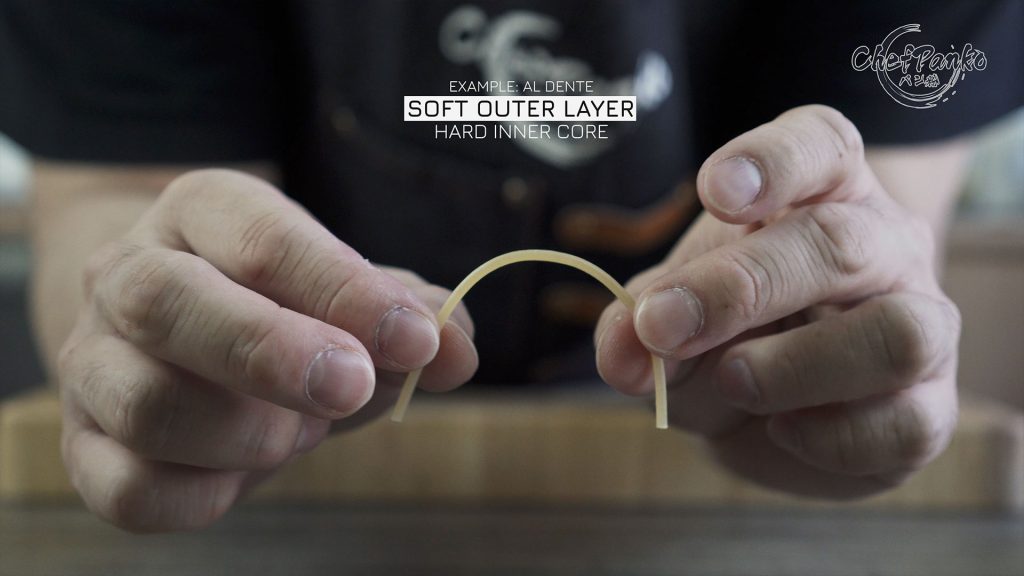

Brittleness
Most new Japanese knife owners are scared to use them because of their brittleness. Some have already chipped them or have multiple microchips along the cutting edge.

Cladding
While the cladding is excellent for added durability and drastically reduces the fracture rate. The harder core below the cladding line is still exposed and not protected.
Sharpened angle
Most Japanese knife enthusiasts are obsessed with thin knives, especially behind the edge. That is why they love to look at the choil of a knife. We know that most Japanese knives have a lower sharpened angle, which makes the cutting edge extremely thin and extra fragile. The thinness gives you sharper performance, and the hardness of the steel is how you keep the sharper performance for a longer period.

Durability
The knives can easily last you a decade or more without having to thin out the knife if you take proper care. With good care, you will see that the knife is a lot more durable than we think. Just like an egg, the shell is fragile on impact; however, it is incredibly durable and won’t crack in your hand no matter how much force you apply. In this example, your hand is acting as a cladding for the egg. But a simple tap on a flat surface will easily crack the egg.

Wrong usage/what not to do
If you want the knife to last more than a decade, you should not do the following things.
Excessive force, Frozen Food, Bones
Because of the thinner and harder knife, you should not use excessive force or force your way through some food. You can think about mincing onion, letting the knife do the work for you, and don’t force your knife or digging your knife into the cutting board. The same applies to Frozen food or bones. Don’t try to force your way through anything but let the knife do the work for you.

Scraping on the cutting board
What most people also like to do is scrape the food together with the cutting edge. While combining this motion with some force, you increase the chipping rate, and one of the reasons you see microchips across the cutting edge on Japanese knives with a high Rockwell rating.

Twisting the blade
The same applies to the twisting motion, and you should always cut completely through some food like root vegetables, and not twist the knife to break the food off.

Don’t cut cheese
I don’t recommend a thin and high Rockwell knife on cheese. As you know, by simply twisting and scraping, you can damage the cutting core. The cheese will cling to your knife, or if it is a hard cheese, it may even chip the knife when you accidentally twist the knife mid-way.
Only suggestions
Of course, what I explained is only a suggestion, but I hope you understand why we don’t do certain things based on what we know about Japanese knives with a high Rockwell hardness and a thin cutting edge.
Maintenance & care
Once you understand what you can and can do, the knife will easily last you a decade or even a lifetime with proper care and maintenance. And it would be best if you always hand-washed your knives.

Single Bevel
While I did not talk about single-bevel knives, the knife’s cutting edge is even thinner and more fragile than the double-beveled Japanese knives.
Questions
If you have any questions or doubts about what you can or can not do, leave them in the comment section below.
Knives used in this video:
Makoto Kurosaki – Shirogami White #2
Shibata Takayuki – Kotetsu Type III – Aogami Super
Yu Kurosaki Shizuku Gyuto – SG2/R2
🛒S H O P:
Kai Shun Santoku Classic:
NA: Kai Shun Santoku Classic
EU: Kai Shun Santoku Classic
Kai Shun Official Amazon Store:
NA: Kai Shun Official Amazon Store
EU: Kai Shun Official Amazon Store
Global Official Amazon Store:
NA: Global Official Amazon Store
EU: Global Official Amazon Store
Wusthof Ikon Classic:
NA: Wusthof Ikon Classic
EU: Wusthof Ikon Classic
Zwilling Pro:
NA: Zwilling Pro
EU: Zwilling Pro
N O T E S:
All knives shown in this video are for reference only.
▶ If you want to know what knife you should buy you can read the following article ''Choosing your knife''. ▶ On my youtube channel, I have reviewed a lot of different knives. You can watch the playlist by clicking here. ▶ Click here, if you want to search for other kitchen knives on: Amazon. ▶ , if you want to search for other Chinese knives on . ▶ Check out my gear on Kit: https://kit.co/ChefPanko ▶ Check out my recommendation on Amazon: https://www.amazon.com/shop/chefpanko Full Disclosure: If you purchase from these links I get a small commission that goes towards supporting the channel and website. As an Amazon Associate, I earn from qualifying purchases ▶ If you have any questions about Japanese knives made in China or about some of the brands feel free to ask it in the comment section below. Thank you for your support and feedback. ▶ Want to work with me? Please use the contact form by clicking here.

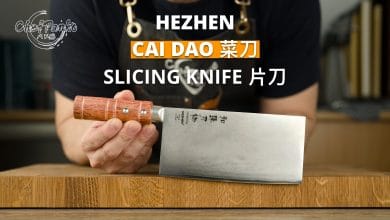
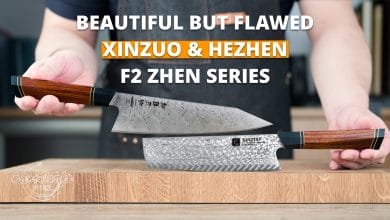
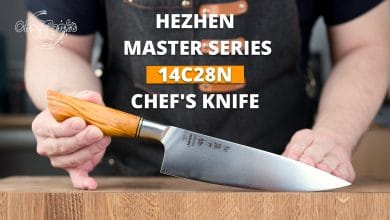
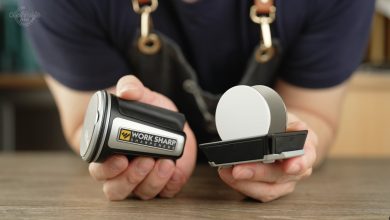
hello! I love your work on the net! I would like to ask you a question
I currently have a 24cm tojiro dp gyutho and 18cm santoku at home and I would like to complete it with a chef’s knife made of softer steel to be able to mistreat and cut cheese, chocolate, pumpkin…what length would you advise me, 20 or 25cm?
Thank!
For most tasks, 20cm is good enough. For some other tasks, a longer knife will suit better but for most things at home 20cm is good enough, As you can still cut it in 2 sections vs one section with a long knife. Some pumpkins can be very large but most of them can be sliced into sections.
So for example a watermelon is occasionally sliced during its seasonality. There is no need to get a large knife if you can manage to get it in half in 2 slicing motions. While it may not be as convenient at the 10/20 seconds vs 5/10 seconds on a larger knife it is just seconds lost. For the rest of the year, the shorter knife should be much more beneficial especially if you intend to use it as you’re easy to grab a knife for pretty much everything else.
For someone selling watermelons all day long and need to split them in half so that customers can buy half a watermelon, for them a longer knife is ideal as it slices in half in one motion, he is much more precise in slicing very evenly so that it is presentable at the demo stand. etc.
Hope that this explains my recommendation, and see what suits you the best.
Extra information on why I don’t recommend cutting through cheese, hard bread, etc:
While we eat a lot of cheese in the West, the Japanese people with the old tradition don’t consume cheese or dairy. With the fusion and modernization of countries, you slowly see more and more diary in Japan (Pizza, Pasta, etc.).
You now see that Japanese knives are adapting to the western cuisines; (western handle design thicker knife, cladding compared to the traditional Japanese knives and single bevels)
This knife, particularly (60 HRC), should be able to go through hard cheese.
The problem is that high Rockwell knives around 61+ have longer edge retention but sacrifice durability.
So an accidental twist combined with a thin edge and high Rockwell (even 60HRC) will result in an increased rate of chipping due to improper use.
Soft cheese causes a problem too since the softer cheese clings onto the knife, and the thin cutting edge cant handle the drag and will get multiple stress fractures.
Hard cheese, if accidentally twisting the knife while the knife was still in the cheese block, can cause chipping.
To avoid multiple stress fractures around the blade, they have added softer cladding to protect the core.
But this also means that you should not use the knife to crush the garlic, especially if done in high volume or tenderize meat with those kinds of knives.
The multiple stress fracture will build up over time, and especially knives without cladding can suddenly break.
Meanwhile, softer knives like the german chef’s knives are softer, around 58 Rockwell or lower, which can handle any abuse.
The edge will roll rather than chip or break, but it sacrifices edge retention/sharpness for the increased durability since it is softer.
To reduce drag on soft cheese, you have cheese knives with holes so that the cheese won’t cling to the blade.
For this reason alone, I always have a beater knife (a cheap knife with soft steel). When I’m at home, I don’t always cook occasionally, I have a frozen pizza, and I don’t have a pizza cutter, so I use my softer cheap knife to cut through it. I basically use it on things that I will never slice or cut with a high carbon thin Japanese-styled knife.
Hope that this explains why I advise against going through the cheese and other hard food.
As with bread, the hard crust is unpredictable and sometimes can be very hard, therefore they have a serrated bread knife with an asymmetrical grind. The teeth bite in the crust and the asymmetrical design adds durability and will saw through the softer layer.
Extra information about breaking rate/stress fracture:
Using high HRC blades to crush garlic, nuts, etc. The stress can be distributed by using the side of the blade near the spine/handle.
Blade construction has a major effect on strength/durability.
Western knives are most commonly mono-steel (one layer) so they are often limited to hardness below 60. Even premium steels are risky above 60 in a mono construction.
-True Damascus. Multi-layer construction with no discrete core material. This is generally not as strong as other constructions since there are multiple stress risers on the cutting edge. There is a legend that some of these old Damascus blades were “nearly unbreakable” but I doubt that they would compare to modern steels.
There is an interesting modern take on this construction using 2 different stainless materials.
San Mai (3-layer) with a hard core and softer (and usually more stain-resistant outer core). These blades can have a practical hardness limit above 60.
A subset of San Mai is modern Damascus. These are really a 3 layer construction with a hard core and multi-steel outer layers
Honyaki (differential heat treated mono-steel). These can be hardened above 60 but generally are not as desirable as San Mai for ultimate hardness/strength.
Most tough blades are layered construction such as San Mai. I’m a fan of San Mai construction as it can reduce the stress on the hard core. Exceeding stress limit is what leads to failure. In bending or torsion; stress is proportional to strain and strain is proportional to thickness. The thinner the hard steel is the more it can be bent before the stress limit is exceeded. This is why you can make a flexible glass cable. Each fiber is so thin that the strain is reduced and the stress limit isn’t exceeded. If the same diameter cable was made from solid glass it would have almost zero strain limit. It would be very stiff and require a high force to bend. But if bent even the slightest bend will likely cause a fracture.
hello! I love your work on the net! I would like to ask you a question
I currently have a 24cm tojiro dp gyutho and 18cm santoku at home and I would like to complete it with a chef’s knife made of softer steel to be able to mistreat and cut cheese, chocolate, pumpkin…what length would you advise me, 20 or 25cm?
Thank!